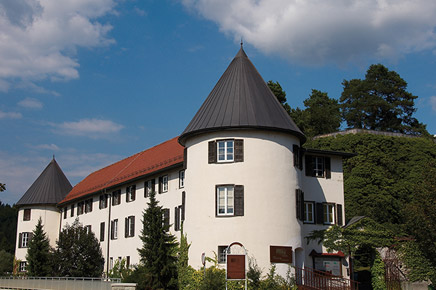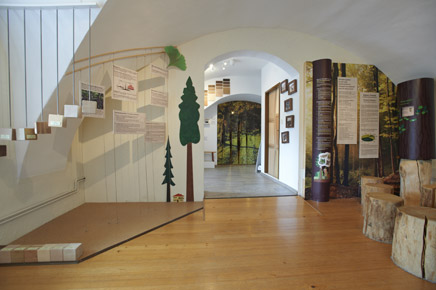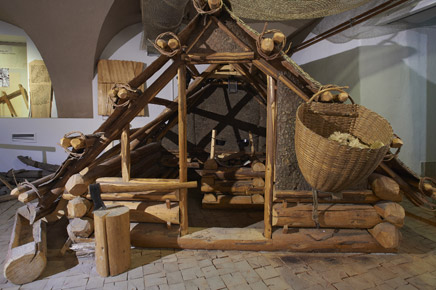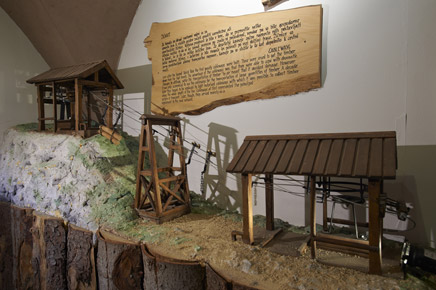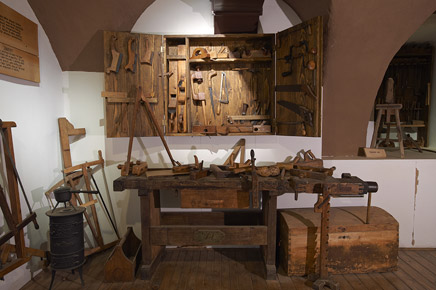- MUSEUM
-
EDUCATIONAL TRAIL
-
Natural and cultural educational trail Monastery Hill
- Everything is connected to everything
- What is a forest? What does the forest mean to me?
- It is home to mixed deciduous forests.
- Forests protect and preserve!
- The Upper Savinja Valley (Zgornja Savinjska dolina) is covered by vast and varied forests.
- They looked after people's spiritual and physical health and knowledge.
- The forest is a treasure trove of biodiversity, and it is full of life.
- The circulation of substances in nature allows new growth
- Natural regeneration of forests
- How old am I? Count it!
- Rock and soil
- Acacia overgrowth
- Spruce is an increasingly threatened tree species in the lowlands
- What does a forester do?
- Wetland is not a dump!
- The forest edge protects, conserves and enriches the forest
- Water and the forest are linked and interdependent
- Confluence of Savinja and Dreta
- Treating the forest with care when we visit it
-
Natural and cultural educational trail Monastery Hill
- BOHAČ DOUBLE HAYRACK
- SCHOOL PROGRAMMES
- PROGRAMMES FOR ADULTS
- FAMILIES
- ABOUT MUSEUM
- CONTACT
- OPENING HOURS AND PRICES
MUSEUM
In Nazarje, at the confluence of the Savinja and Dreta River, stands Vrbovec Castle, which has housed a museum since 2001. It displays the history of forestry and carpentry in the Upper Savinja Valley, a mostly wooded region fairly closed to traffic. Forests dictated a unique economic development of this area and had a decisive effect on the lives of local inhabitants.
Until World War II, the survival of locals was closely connected with the exploitation of forests, as well as processing and sale of wood, which still represents an important natural resource. Tree felling and harvesting, sawmilling, rafting and wood trade represented highest-yielding activities and the main source of income for a large part of the population.
Forests and Wood – Treasure of Slovenia
The introductory part of the permanent exhibition brings interesting discoveries about forests, trees and usefulness of wood. It presents forests around the world, their importance and different ways of management with special emphasis on the features of and peculiarities of Slovenian forests. We learn about the most interesting trees in Slovenia and around the world as well as about the development of forests throughout the various geological periods.
We familiarise ourselves with the usefulness of wood as one of the most important materials and a human companion since the beginning of civilisation. The locals built wooden bridges on numerous streams and rivers, while wooden dams represented an important protection and water flow regulation facility. People decorated their homes with different floor surfaces, very often with wood laid on the floor, whereby wood was also often included in local customs and traditions or rituals.
In Times of Former Foresters and Carpenters
The central part of the exhibition takes us in the past, in the times of former foresters and carpenters in the Upper Savinja Valley: woodcutters, sawyers and raftsmen, horse and cart drivers, joiners, wheelwrights and carpenters. Already forgotten events, lifestyles and work habits and customs of past time are once again brought to life. The red thread which leads us through the central part of museum exhibition is represented by wood. We follow it on its way from a growing tree in the forest, through felling and harvesting to its processing into the final product. This is accompanied by the stories of people, inevitably dependent on this natural resource.
We go back in time to when felling in the mighty forests of the Upper Savinja Valley was done by axes and later hand saws, when the only way to harvest wood from the mountainous and hard-to-access world was along the trails, and when transportation of logs to saw mills was done by floating. This was the time when felling was limited to the summer and autumn months, harvesting to the winter months, and transport on water to the spring months, the time when it took a whole year for the wood to come from the forest into the hands of a buyer. The living conditions of forest workers during felling are shown, with an emphasis on the role of horse and cart drivers who played an important role in harvesting timber. The exhibition also touches on the progress brought into forestry with the change of the social system after the Second World War: construction of cableways and especially forest roads, and related introduction of modern machinery. The exhibition shows the development of sawmilling, from manual wood cutting, over primitive water-based Venetian sawmills to electric sawmills, and the role of sawmills as the only possible way for transporting large quantities of wood to distant places. The exhibition is also dedicated to the development of joinery, wheelwrighting and carpentry in the Valley, as well as to the work and life of joiners, wheelwrights and carpenters.
Explore and Participate
In the museum, you will definitely forget the modern way of life, at least for a moment, and return to a period when “time was still running more slowly”. You will be able to test your knowledge of some of the Slovenian indigenous tree varieties, participate in a quiz where the correct answers assemble a tree, or play by solving wooden mind games.

